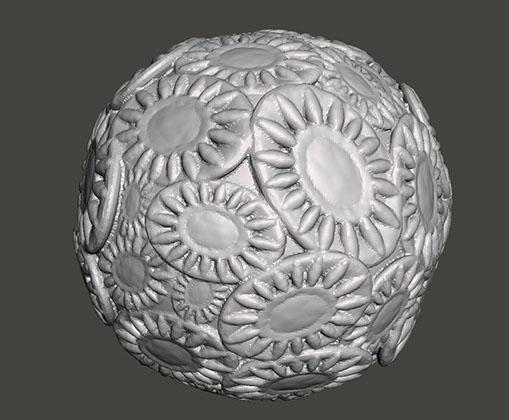Species: Emiliania Huxleyi
Student: Waffles Soeleman
Information:
The EHUX, or Emiliania Huxleyi is a species of phytoplankton found in almost all of the oceanic ecosystems. It has a spherical appearance but covered with circular disks made of calcite called coccoliths. This characteristic makes the EHUX a Coccolithophore, and there are many similar species to it. The EHUX is the primary specimen due to its abundance and extensive study by scientists.
Being the a common type of phytoplankton, EHUX cells usually outnumber those of all other species combined, frequently accounting for 80 or 90% or more of the total number of phytoplankton cells in the water. There are also free-floating coccoliths which latch themselves onto EHUX cells like armor, and give them their unique architectural appearance. The combination of high number of complete EHUX cells, free-floating coccoliths and other species of phytoplankton can create large patches of light colored water in the ocean. The white colors are a results of more coccoliths rather than complete EHUX cells.
These high concentrations, called “blooms” reflect sunlight out of the water, and can be seen from outer space, where the color is more noticeable against the rest of the oceans. By doing so, they are integral to global climates as they lower water temperatures where they are concentrated. Heat and light is also radiated back into the atmosphere, making the air above the water surface a bit warmer.
Due to their nature of calcium and carbon, coccoliths also contribute to geology, as ones on the ocean floor become part of the sediment and form chalk and limestone rocks. As a result, the famed White Cliffs of Dover are made up of coccoliths that fell to the sea bed millions of years ago.
